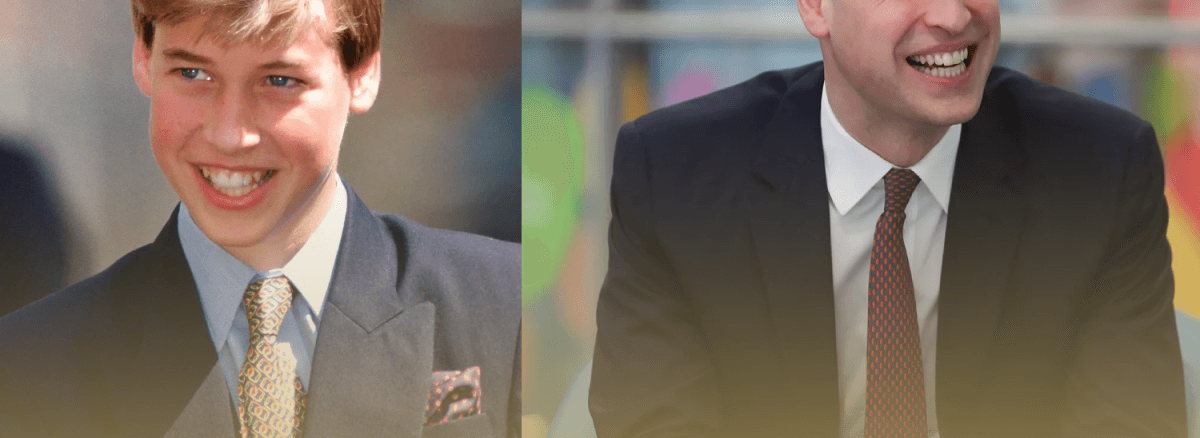Prince William’s hair loss has been a widely discussed topic for more than a decade. As a globally recognized public figure, every change in his appearance naturally attracts attention. From hair plugs rumors to discussions about why Prince William is bald, the public remains curious about how and when his hair loss started—and how the future king chooses to embrace it.
Below is an in-depth look at Prince William’s hair journey, including his genetics, grooming choices, facial hair habits, and the latest updates surrounding his appearance.
Genetic Factors
Prince William’s hair loss is largely attributed to genetic factors. Hair loss was common among male members of his family, including his father, Prince Charles, and grandfather, Prince Philip. This genetic legacy has contributed to Prince William’s own hair loss.
Onset of Hair Loss
Prince William’s hair loss became noticeable in his late 20s. Over time, he experienced significant thinning, particularly at the crown and front of his head, which captured public attention.
Prince William Hair Plugs: Rumors vs. Reality
One of the most persistent topics around Prince William’s appearance is the question of Prince William hair plugs. Over the years, tabloids have speculated about whether he has secretly undergone a hair transplant.
However, there is no verified evidence that Prince William has ever had hair plugs or any cosmetic hair restoration procedure. In fact, the prince has openly embraced his natural look, choosing confidence over cosmetic enhancement.
His approach contrasts with the growing trend of male celebrities seeking hair restoration, making his natural aging process stand out even more in today’s image-driven world.
When Did Prince William Lose His Hair?
Prince William began showing signs of hair thinning in his late 20s, with noticeable recession at the temples and crown. By his mid-30s, the thinning became more pronounced, drawing increased media attention.
The timeline of his hair loss aligns with androgenetic alopecia, the most common genetically inherited male pattern baldness. Considering that both his father, King Charles III, and grandfather, Prince Philip, experienced similar hair loss patterns, William’s baldness fits a clear family trend.
Prince William Haircut: Simple, Clean, and Confident
As his hair continued to thin, the Prince gradually shifted toward shorter, minimalist haircuts. His preferred haircut style:
- Very short on the sides
- Uniformly trimmed length
- Clean, low-maintenance grooming
This style minimizes the contrast between thinning areas, creating a neat and dignified look. The Prince William haircut has become a subtle trademark—effortless, natural, and completely aligned with his public persona.
Prince William Hairstyles Through the Years
Throughout his life, Prince William’s hairstyles have evolved significantly:
Early Years
Longer and thicker, often styled with a natural middle part.
20s & Early 30s
Classic, medium-length cuts suitable for official royal events.
Today
A very short, almost buzz-cut style that complements his natural hair loss pattern.
His changing hairstyles highlight not only his maturing public role but also his comfort with aging naturally—without attempting to hide his thinning hair.
Why Is Prince William Bald?
The primary explanation for why Prince William is bald is simple: genetics.
Male members of the British royal family have a long history of hair thinning and baldness, making the prince’s hair loss unsurprising. In addition, Prince William has shown no interest in cosmetic procedures such as hair transplants, choosing instead to accept hair loss as part of life.
His decision sends a strong message of confidence and authenticity—qualities that many of his supporters appreciate.
Prince William Beard
Facial hair is another aspect of Prince William’s appearance that occasionally sparks interest.
Does Prince William Have a Beard?
Prince William is usually seen clean-shaven, particularly during official royal duties. Although he has grown a beard temporarily in the past—for military training and brief personal preference—he rarely keeps it.
Prince William Facial Hair
When he does experiment with facial hair, it tends to be short-lived. Royal tradition favors a polished, clean-cut appearance, and William generally follows that standard. His facial hair moments, while popular among fans, remain exceptions rather than the rule.
Reasons for Not Undergoing Hair Transplant
Embracing His Appearance
Prince William has accepted hair loss as a natural process and has chosen not to undergo any cosmetic procedures to alter it. He is known for embracing his appearance with confidence.
Not a Suitable Candidate
There is debate about whether he is a suitable candidate for a hair transplant. The potential lack of sufficient donor hair could impact the success of such a procedure.
Royal Traditions
There is a general perception that members of the royal family are more conservative when it comes to cosmetic procedures. Although there is no explicit rule or ban, such procedures are known to be rare among royals.
Media and Public Perception
Media and Public Interest
As a globally recognized figure, Prince William’s hair loss and potential hair transplant have been subjects of ongoing media interest. Various media outlets frequently speculate about whether or not he has undergone a hair transplant.
Social Message
Prince William’s decision to maintain his natural look sends a message about the importance of accepting natural aging and one’s appearance. This stance is positively received by many.
Comparison with Prince Harry
Prince Harry’s Hair Transplant
Reports suggest that Prince Harry has opted for a hair transplant, highlighting the differing approaches the two brothers have towards hair loss. Prince Harry appears to have taken a more proactive approach.
Different Approaches
This difference between the brothers leads to various interpretations regarding their personal preferences and lifestyles. While Prince William adopts a more traditional approach, Prince Harry seems to prefer modern solutions.
Prince William Latest: Recent Appearance and Public Reactions
In recent public engagements, Prince William continues to display a polished, confident look that embraces his natural hair loss. His evolving role within the monarchy—especially as the Prince of Wales—has brought greater attention to his appearance, but his calm, self-assured approach remains unchanged.
Public perception of his baldness has also shifted positively. Many view his natural look as refreshing in an age of cosmetic enhancements and digital perfection.
